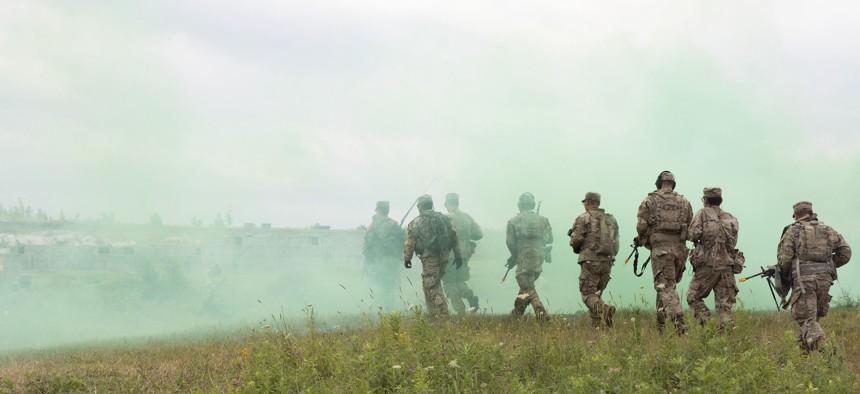
Soldiers conduct a Live Fire Exercise on July 12, 2022, on Fort Drum, New York. Sgt. Benjamin Martinez
Army Criminal Division Reviewing Thousands of Cases for Errors
At least 1,900 soldiers saw their careers slowed or ended by incorrect tagging in the service’s criminal database.
“It’s clear that we made mistakes,” Army’s Criminal Investigation Division Director Greg Ford said Thursday.
Ford’s office this week announced an effort to review and, when necessary, remove the names of 1,900 soldiers from its criminal database—and CID expects that number to grow.
All of the cases stem from a recruiting program run from 2005 to 2012 that produced 130,000 new recruits and plenty of fraud. The Army National Guard Recruiting Assistance Program, or G-RAP, offered “informal recruiters” $1,000 for every new recruit who signed up and another $1,000 when that recruit shipped for basic training. While these “informal recruiters” could be retirees, family members, and civilians, most were National Guard troops.
When the first cases of fraud emerged, CID quickly investigated—perhaps too quickly. Dubbed Task Force Raptor, it was CID’s largest investigation ever: up to 3,200 soldiers came under scrutiny over four years.
The Guard took administrative action against 286 Guardsmen, while 136 others were prosecuted in civilian courts.
But plenty more were tagged in the Army’s CID criminal database even if no fraud was found in their particular case. Some were “titled” within the Army’s criminal system while others found themselves enrolled in a Federal Bureau of Investigations database. In both cases, soldiers said the tagging slowed or or ended their careers.
CID began its review after receiving complaints from these soldiers, Ford said.
“It is clear that we fell short in a large number of these investigations,” he said. “We are dedicated to completing a review of our processes, policies, and training to ensure that such errors do not reoccur.”
The review effort is just part of CID’s “transformation,” he said. The division is working to “raise the level up to the federal law enforcement standard” after several years of criticism and high leadership turnover.
“The organization is undergoing a lot of change right now…to provide the Army with the superior felony criminal investigative support it needs and deserves,” Ford said. “For us, this is just what we must do and should do as a law enforcement agency. If we identify we did something wrong, we need to be upfront about it and take the action to fix it.”
The Army said they weren’t sure how many soldiers were forced out of or chose to leave the Army as a result of being listed in the criminal system and can’t quantify what effects the investigation might have on retention. But CID did share that they intend to serve as a primary resource for anyone who believes they are entitled to relief.
CID also said that talks about the ongoing review predate the current recruiting crisis, but the National Guard Bureau is reviewing the referral program, said Army personnel chief Lt. Gen. Douglas Stitt aid. In its heyday, the program proved effective and could help with the Army’s current recruiting difficulties—if the program were made less susceptible to fraud.
Ford said CID expects to complete all current reviews by the end of 2022.




